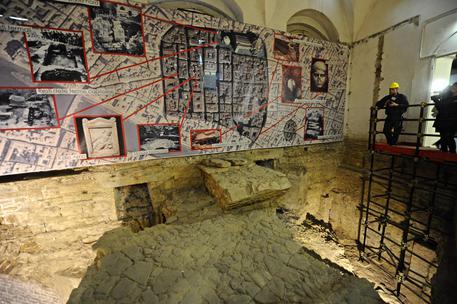Dutch archaeologists have recently completed the rescue excavation of a unique treasure hoard dating to the beginning of the 5th century AD, from a field in Limburg. The hoard partially consists of a combination of gold coins and pieces of silver tableware which had been deliberately cut up (hacksilver).
The complete hoard was shown at a press conference on Friday, April 25 in Limburg Museum (Venlo) where archaeologists highlighted the significance of the find as a key piece of evidence for our understanding of the final phase of Roman rule in the Netherlands, around the year AD 411. Placing the treasure into perspective within the political and military chaos at the time, why was the precious and richly decorated Roman silver tableware cut into pieces and buried?
Read the rest of this article...






